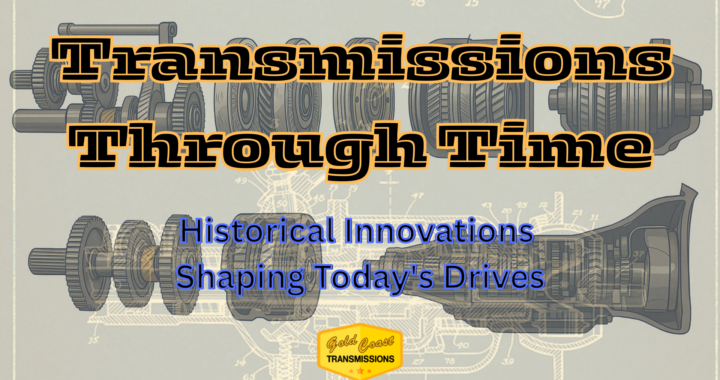Modern vehicles owe their sophisticated mechanics to the influential transmissions of the past. Historical transmissions shaped their era and continue to drive advancements in automotive engineering and inspire future innovations.
Early Innovations: Manual Mastery
Early vehicles used straightforward manual transmissions. Ford’s Model T, launched in 1908 with a planetary transmission system, revolutionized mass production and made car ownership accessible to the public. Ettore Bugatti’s Bugatti Type 35, equipped with a precise manual gearbox, dominated 1920s racing and set a benchmark for engineering excellence.
Automatic Revolution: Fluid Dynamics
General Motors introduced the Hydra-Matic transmission in 1940 with the Oldsmobile Series 60, pioneering fully automatic gear systems. This breakthrough, endorsed by public figures and embraced by drivers, transformed the ease of driving. Chrysler’s TorqueFlite transmission, used in the Chrysler Imperial and favored by celebrities like Frank Sinatra, pushed the envelope for luxury and performance.
Continuous Variable Transmissions (CVTs): Fluid Efficiency
CVTs, which Leonardo da Vinci conceptualized in the 15th century, entered mainstream automotive use with vehicles like the Subaru Justy in the 1980s. Honda and Nissan popularized CVTs with models such as the Civic and Altima, offering drivers smooth power delivery and exceptional fuel efficiency, especially in an era increasingly focused on sustainability.
Influence on Modern Transmissions
Historical transmissions set the stage for today’s standards of reliability, efficiency, and performance. Volkswagen’s DSG (Direct Shift Gearbox) dual-clutch transmission, seen in the VW Golf GTI, merges manual and automatic technologies for rapid, seamless shifting. The ZF 8-speed automatic transmission, a staple in luxury BMW and Audi models, demonstrates how advanced electronics and mechanical heritage converge.
Iconic Drivers and Their Legendary Rides
Ayrton Senna – McLaren MP4/4
Ayrton Senna, a Formula One legend, showcased precision driving and expert gear transitions in the 1988 McLaren MP4/4. The car’s 6-speed manual transmission enabled him to dominate the season with eight Grand Prix wins and a world championship, cementing the MP4/4 as one of F1’s most successful vehicles.
Carroll Shelby – Shelby Cobra 427
Carroll Shelby, an American automotive icon, paired a 4-speed manual transmission with a 7.0L V8 in the Shelby Cobra 427. His design delivered raw power and an unforgettable driving experience, shaping the world of high-performance sports cars.
Frank Sinatra – Chrysler Imperial with TorqueFlite
Frank Sinatra, known for his music and style, drove the Chrysler Imperial with the TorqueFlite automatic transmission. This technology offered smooth shifting and durability, elevating the standard for American luxury cars and making urban driving more enjoyable.
Future Outlook: Electrification and Beyond
The future of transmissions lies in the rise of electric vehicles (EVs), where Tesla’s single-speed transmission in the Model S simplifies power delivery and enhances acceleration. As autonomous vehicles emerge, expect to see AI-driven adaptive transmission systems and advanced CVTs that optimize performance and efficiency. Innovations in materials, such as composites and high-strength alloys, promise lighter, stronger, and more durable transmissions.
Historical transmissions have shaped automotive evolution, setting the foundation for today’s cutting-edge technologies. Celebrating these pioneering systems, legendary drivers, and iconic vehicles highlights the blend of innovation and tradition that propels the industry forward. From manual classics to future-focused EVs, transmissions remain central to shaping the vehicles of tomorrow.



